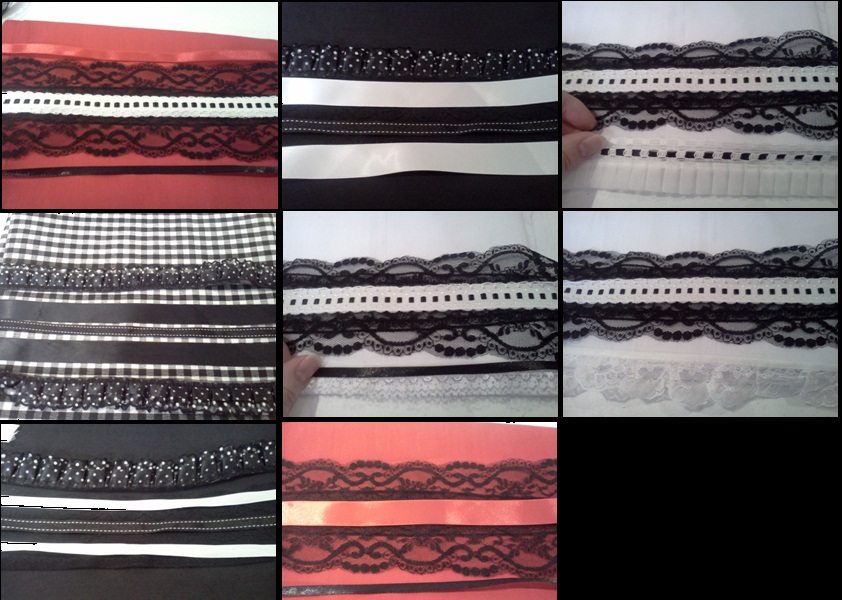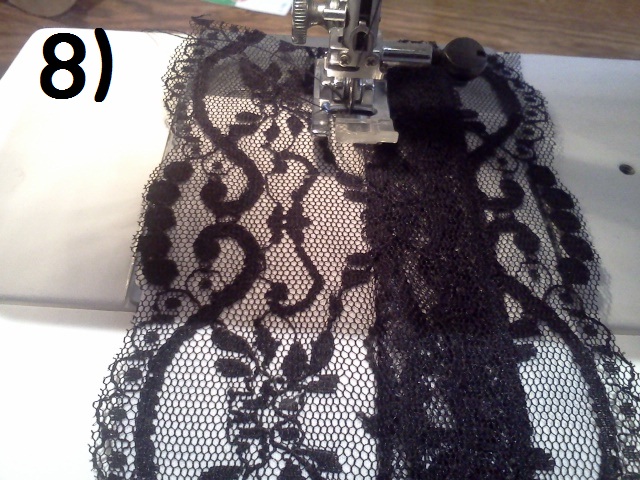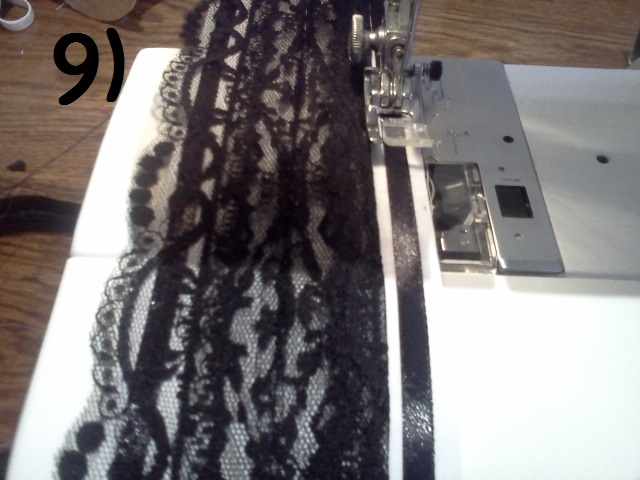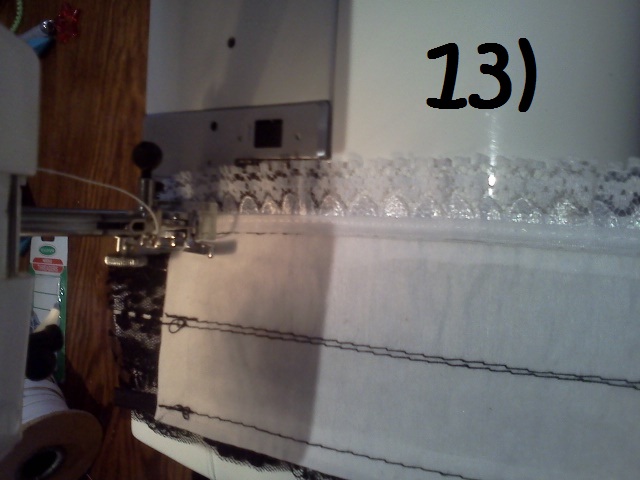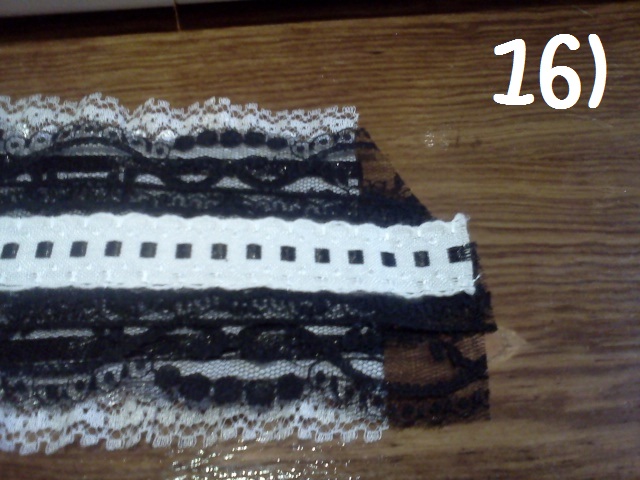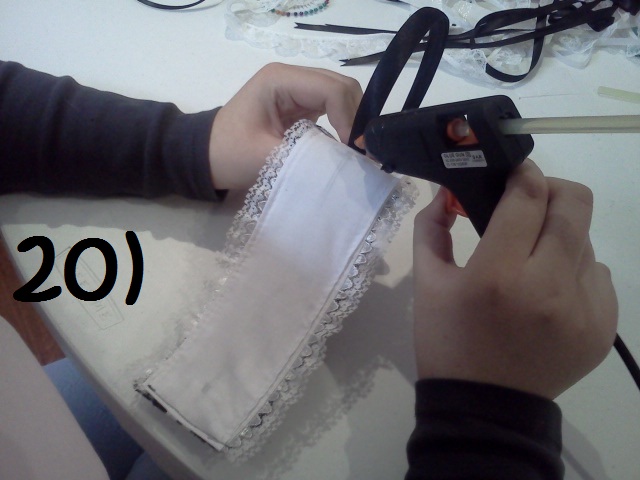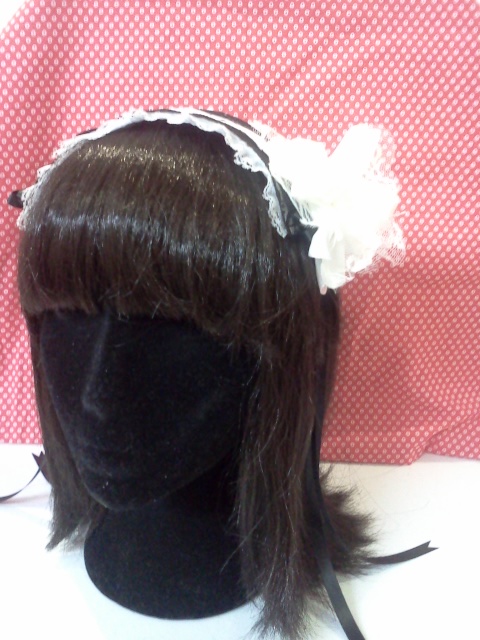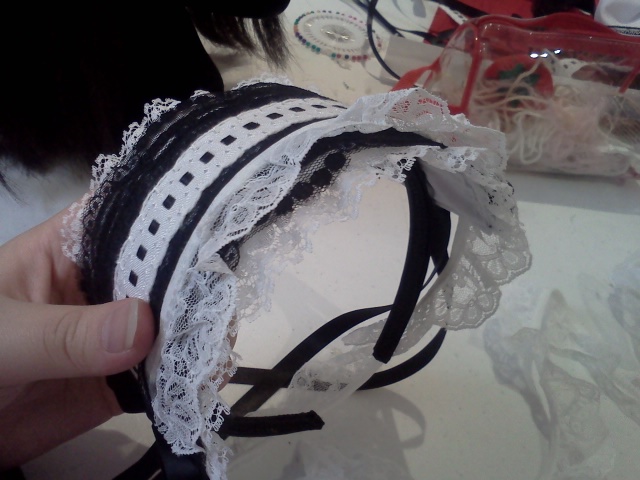
Cosplaying as Lucy Heartfilia from Fairy Tail? Looking for a whip to complete the look? All you can find online are SM and fetish related items that cost over $20USD? Well I’ve been in that situation >.<’ This tutorial will show you how to make your own cheaper alternative!
What you need:
• 2 metres of cheap black fabric. I bought mine for $2.50 a metre
• Cardboard tube with a decent diameter for you to hold. You can try asking the fabric shop assistant if you can have the cardboard rolls they plan to throw out. The shop I went to gave me all of theirs for free…like 15 rolls…. Must.Make.Keyblade!
• 40cm of flat rope.
• Roughly 1cm wide White ribbon
• Brown paint
• Interfacing
• Hot glue
• Maybe some polyester stuffing. You only need this if the cardboard tube is really wide.
Steps:
1. Cut your black fabric into 4 strips roughly 10cm wide. You want to keep the 2m length so cut on the side of the fabric. (if your tube is wider try 5 strips)
2. Fold each strip in half and sew it down. Do this for all your strips
3. Now for the time consuming part… pull the inside of the strips out so your sewing is hidden within. A fast way of doing this is to get a paper clip and bend it out to form an “s” shape, then using sticky tape stick one end to a thin stick so you get a stick with a hook on it. Put it though the fabric strip all the way to the end, hook it into the fabric and pull it out.

4. Once all your strips have been pulled out, lay them on top of each other and sew a line 15cm from the edge.

5. Now plait the strips together until you reach the end. Then sew the strips together to hold the plait in place. I WILL CALL THIS END OF THE PLAIT “Z” and the other end “A”

6. Cut out 2 curved triangles from the interfacing and iron it down to black fabric, leaving a 1cm edge around them.

7. Fold the 1cm flap into the triangles, iron down and sew around.
8. Get the end “Z” of the plait and hot glue it onto one side of the triangles. Then hot glue the other triangle on top of this.

9. Fold your flat rope in half and sew this to the “A” end.

10. Cut off 15cm of your cardboard tube and paint it brown. Leave to dry

11. Measure 1cm from both ends of the cardboard tube and make a small mark with a pen. Using hot glue, stick white ribbon onto the tube at the 1cm line.

12. Slide your plait into the tube. If it is loose add polyester stuffing into the tube and seal it off with some scrap black fabric by hot gluing it in.
Here’s what it should look like!


Check out my deviantart page if you like this tutorial and my other tut on how to make your own Lolita maid headdress.


